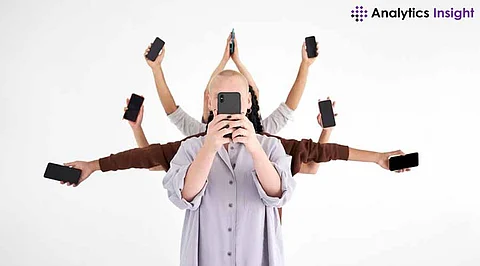

Did you know that the average Indian spends a staggering 4 hours and 48 minutes on their mobile phone every day? This alarming trend has led to a nationwide concern about smartphone addiction, which has taken a toll on mental and physical health, relationships, and productivity. Smartphone obsession has become a pressing issue in India, where mobile usage has skyrocketed. As Indians continue to spend unprecedented amounts of time glued to their screens, it's essential to examine the consequences of this addiction and how the country is addressing this growing problem.
An online survey done and published in 2023 states that, on average, Indians now spend about 4 hours and longer a day on their smartphones. This addiction has resulted in mental illness consequences, including varied effects such as anxiety, sleeplessness, and possible physical pains in the neck and back due to extensive screen usage. The most affected demographic group is young adult users of the smartphone system, whose devices permit gaming, social media, and browsing.
According to the Digital India Foundation findings, nearly 50% of smartphone users in India spend a whopping 6-7 hours a day on such devices, and 20% have even crossed the limit of spending over 10 hours per day.
One step of the Indian government is to address digital addiction among its young population. Launched with its initiatives to improve healthy digital habits in 2020, the Ministry of Electronics and Information Technology has since had many campaigns for continuous breaks and educating users on overuse's probable mental and physical impacts.
One of the initiatives is "Digital Wellbeing," which teaches people, especially schoolchildren, about the dangers of excessive smartphone use and how to balance it.
Technology companies have also contributed to promoting digital well-being. For example, Android and Apple introduced "Reducing Screen Time" and "Digital Wellbeing" features that allow users to manage usage by creating daily limits and reminders for consumption habits concerning a smartphone.
Social media giants also introduced measures that can help lessen a user's time spent on their apps, such as "Reducing Screen Time" reminders and app usage trackers.
Most schools and institutions across the country have already added this concept to the framework of learning: use technology in moderation. Awareness campaigns have been organized that endorse this concept: mindfulness and self-control about smartphone usage. This should be directed to minimize social media and games during school hours and around students' concentration.
People have become increasingly aware of smartphone addiction in Indian society. The studies, along with the experiences narrated by the affected individuals, have helped create this awareness. It is leading them to become proactive in seeking solutions to their gadget addiction. For this reason, even social media influencers, counselors, and psychologists are now discussing digital detoxification through online resources.
Still, little is known about tackling the impact of smartphones in India, but things certainly look positive. Awareness-screaming-screen benefit time reduces, and everything possible is being done to provide users with the tools, which would lead to digital well-being. The government and society continue with it and, someday, could bring smartphone addiction under control in India, which would be beneficial in dealing with technology in the future.
